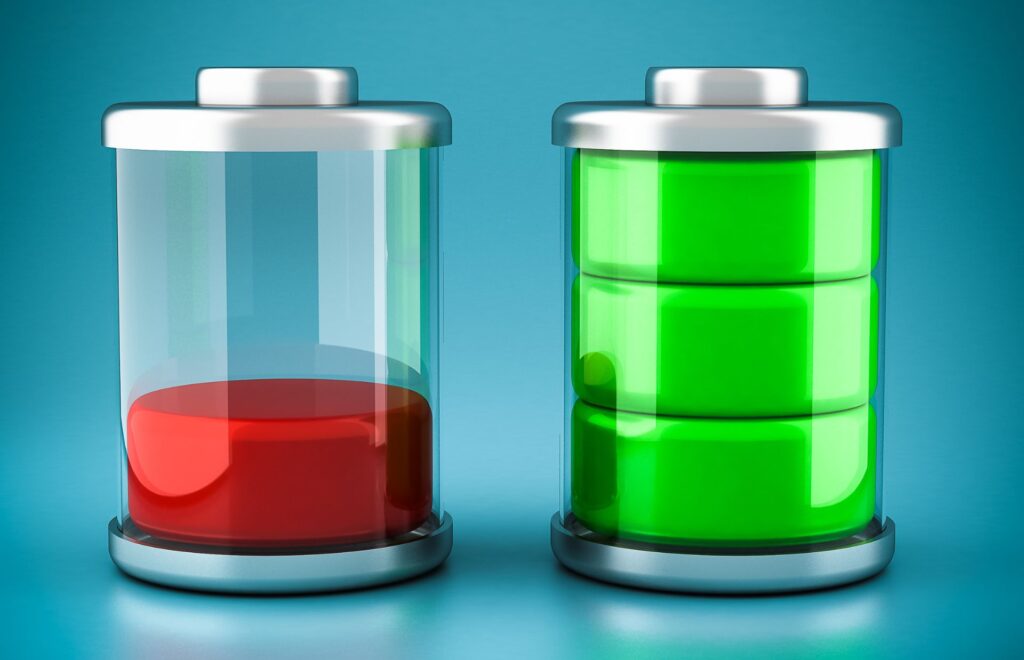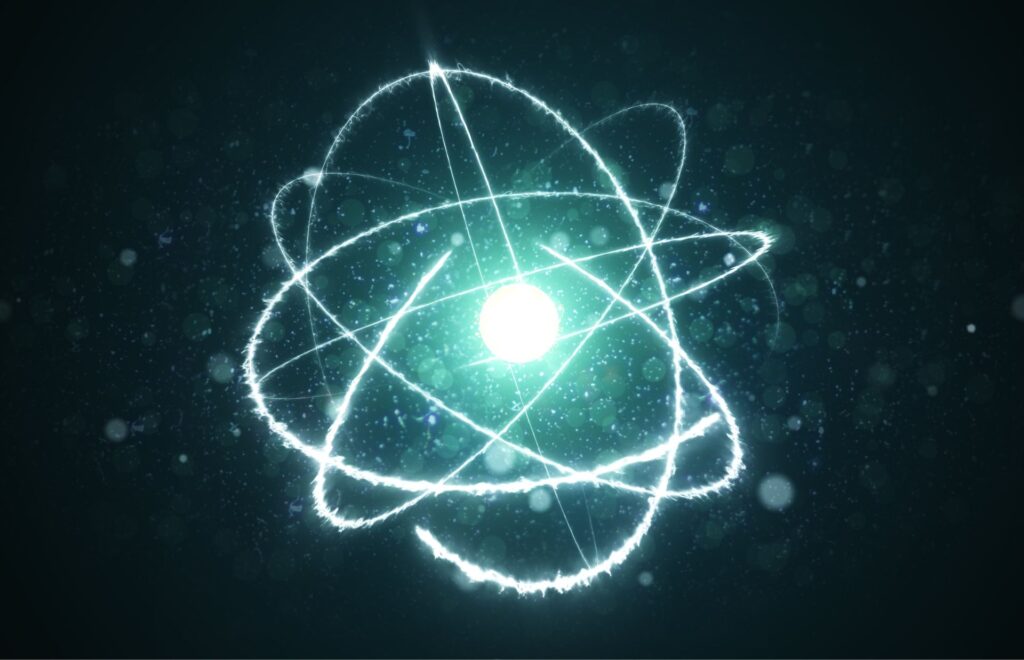Betavolt, a rising Chinese start-up, has sent shockwaves through the tech world with its audacious claim: a nuclear battery capable of powering your smartphone for a staggering 50 years without ever needing to be plugged in.
This isn’t some science fiction pipe dream. Betavolt unveiled their invention, the BV100, earlier this month, boasting a coin-sized marvel that harnesses the power of atomic energy. Imagine tucking that tiny powerhouse into your phone and never seeing another charging cable again. No more frantic dashes to airports with phones on life support, no more sleepless nights worrying about missing that important call because your battery died.
Betavolt promises a future where our devices are liberated from the tyranny of the outlet, forever free to roam the digital plains untethered. Before we explore the topic further, let’s take a brief walkthrough of the historical narrative and the concept of nuclear batteries.
Historical Context
Background on Nuclear Batteries:
The seeds of nuclear battery technology were sown in the early 20th century, with the discovery of radioactivity. In 1913, Henry Moseley observed a tiny electric current generated by the decay of radium, laying the groundwork for future advancements. As the understanding of nuclear physics deepened, scientists began exploring the potential of other radioactive isotopes as energy sources.
The Rise of Radioisotope Generators
The first practical applications of nuclear batteries emerged in the 1950s, driven by the demands of space exploration and the Cold War. Radioisotope thermoelectric generators (RTGs) were developed, using the heat generated by radioactive decay to create electricity through a process called thermoelectricity. These robust and reliable power sources fuelled satellites, spacecraft, and even remote weather stations in the Arctic.

Beyond the Heat: Direct Conversion Technologies
While RTGs were successful, their efficiency was limited by the conversion of heat into electricity. Scientists sought more efficient methods, leading to the development of direct conversion technologies in the 1960s and 70s. These technologies, like beta voltaic cells and thermionic converters, directly convert the energy of nuclear particles into electricity, offering significant efficiency gains.
Challenges and Roadblocks: Safety, Cost, and Regulations
Despite their potential, nuclear batteries faced significant challenges. Safety concerns regarding radiation exposure and waste disposal were paramount. Additionally, the high cost of radioactive materials and complex manufacturing processes limited their widespread adoption. Regulatory hurdles further hampered their commercialization, creating a complex landscape for developers.
Concept of nuclear batteries.
Nuclear batteries, also known as atomic batteries or radioisotope generators, are a type of battery that uses the energy from radioactive decay to generate electricity. Unlike traditional batteries, which need to be recharged, nuclear batteries can last for decades, even centuries. This makes them ideal for use in remote or inaccessible locations, such as spacecraft, pacemakers, and environmental monitoring stations.
How do nuclear batteries work?
Nuclear batteries work by converting the energy released from the decay of radioactive isotopes into electricity. There are two main types of nuclear batteries: thermal converters and non-thermal converters.
- Thermal converters use the heat generated by radioactive decay to produce electricity. This is done using a device called a thermocouple, which converts heat into electricity.
- Non-thermal converters use the radiation itself to produce electricity. This is done using a device called a semiconductor, which converts the energy of the radiation into electricity.
Significance of energy storage and the increasing demand for sustainable solutions.
Imagine a battery that could power your phone for 50 years without a recharge, a pacemaker humming for decades without surgery, or a remote weather station sending data from the middle of nowhere for years on end. No magic, just nuclear batteries stepping onto the scene. These aren’t the ones powering your car, but tiny powerhouses fuelled by the steady decay of radioactive isotopes.

So, how do they fit into the sustainable energy puzzle? Buckle up, it gets interesting.
- Firstly, unlike traditional batteries and even solar panels, these guys are long-haul players. We’re talking about decades of constant, reliable power – a dream for remote locations, medical devices, and even satellites. This cuts down on waste and maintenance, a big win for sustainability.
- Secondly, they’re emission-free. Yes, nuclear, but hear me out! Unlike reactors, these batteries have no chain reaction, just the slow release of stored energy. No greenhouse gases, no smoke, just clean power trickling out for years. They’re not a replacement for renewable energy, but they can fill the gaps when the sun isn’t shining or the wind isn’t blowing.
- Thirdly, imagine exploring the moon or Mars. Forget lugging tons of batteries; a few compact nuclear ones could power a whole base for years. This opens up doors for space exploration and scientific research like never before.
Implications
Now, before you get too excited, there are some wrinkles. Nuclear batteries are still in their early stages, and safety and disposal are crucial concerns. They’re also currently quite expensive, though research is bringing the cost down.
But the potential is undeniable. Nuclear batteries aren’t the silver bullet for all our energy woes, but they’re a powerful tool in the toolbox, offering long-lasting, reliable, and clean power – a major piece of the sustainable energy puzzle. So, keep an eye on these tiny nuclear champions, they might just change the game!
The potential implications of this technology are vast. Imagine medical devices that never need replacement, remote sensors beaming data for decades without maintenance, and, yes, smartphones that transcend the shackles of their finite batteries. But beyond convenience, lies a deeper promise: a world where energy production becomes cleaner, more efficient, and less reliant on dwindling fossil fuels.
Is Betavolt’s BV100 Different?
The BV100 isn’t your typical lithium-ion battery. Instead of storing and releasing electrical energy directly, it taps into the natural decay of a radioactive isotope, nickel-63. This decay process releases tiny particles called beta rays, which are captured by the battery’s clever internal architecture and converted into electricity. It’s like having a miniature nuclear reactor humming away inside your phone, constantly whispering sweet nothings of endless power.
But don’t worry, sci-fi aficionados, there’s no need to break out the Geiger counters. Betavolt assures us the BV100 is meticulously designed with safety in mind. Multi-layered shielding ensures minimal radiation exposure, and the battery itself is built to withstand extreme temperatures and even physical shocks. According to Betavolt, their multilayer construction keeps batteries from exploding or catching fire in the event of a sudden force. Furthermore, the battery has a broad operating temperature range of -60 to 120 degrees Celsius. In other words, your phone won’t become a radioactive hot potato anytime soon.

Betavolt: Unraveling the Promises and Potential Pitfalls of Revolutionary Nuclear Batteries
Of course, such a revolutionary invention raises a slew of questions. Can Betavolt’s claims be trusted? Is a 50-year battery life truly achievable? What about the environmental impact of using nuclear materials, however small the scale? It’s natural to be sceptical. This is uncharted territory, and rightfully so.
Betavolt is still in the early stages of development, and independent verification of their claims is yet to come. The first nuclear battery created by Betavolt is only 15x15x5 cubic millimetres in size, but it can produce 100 microwatts of power at a voltage of 3V. By 2025, the business hopes to have a battery that can hold one watt of power. The company intends to begin production by 2025, starting with smaller devices like medical implants and sensors before eventually scaling up to power-hungry gadgets like smartphones.
This gradual rollout will allow for thorough testing and refinement, hopefully addressing any safety or environmental concerns. Yet, the mere existence of the BV100 ignites a spark of hope for a future unshackled from the limitations of our current batteries. It’s a vision where devices become companions, not hostages to the wall socket, where technology seamlessly integrates into our lives without the constant reminder of its fragile dependence on dwindling power reserves.
A New Dawn: Miniaturisation and Emerging Technologies
Recent years have witnessed a renewed interest in nuclear batteries, driven by advancements in miniaturization and materials science. Companies like Betavolt are developing coin-sized batteries capable of powering small devices for decades, while others are exploring exotic materials like diamond semiconductors for even greater efficiency.
Whether or not Betavolt delivers on its ambitious promises, the company has already achieved something remarkable: it has dared to dream beyond the bounds of the ordinary, and in doing so, it has sparked a conversation about a future powered by possibilities, not plugs.
This is not just about a longer-lasting battery. It’s about a paradigm shift in the way we think about energy, about technology, and about our relationship with the devices that have become an extension of ourselves.
So, while Betavolt’s claims may spark debate and require cautious scrutiny, one thing is undeniable: the possibility of a 50-year battery is no longer the stuff of science fiction. It’s a tantalising glimpse into a future where the only thing standing between you and a lifetime of unchecked phone calls is a tiny coin-sized marvel whispering, “Charge no more.”
Also Read: Lenovo ThinkBook Plus Gen 5 Hybrid: Laptop or a Tablet?
For More Related Articles Click Here


This has the possibility to be a game changer but I don’t think I am comfortable with carrying around a nuclear battery in my pocket yet.